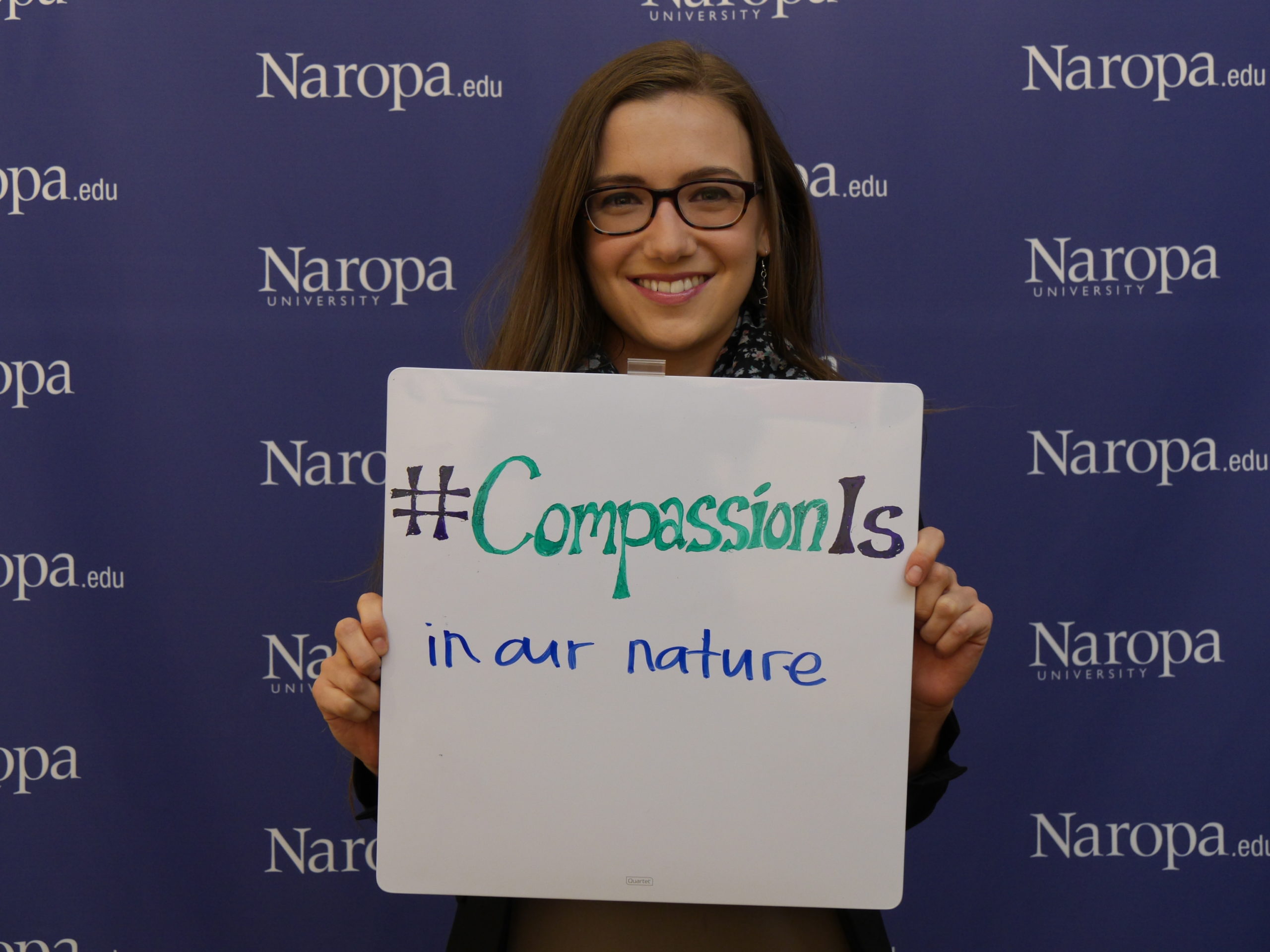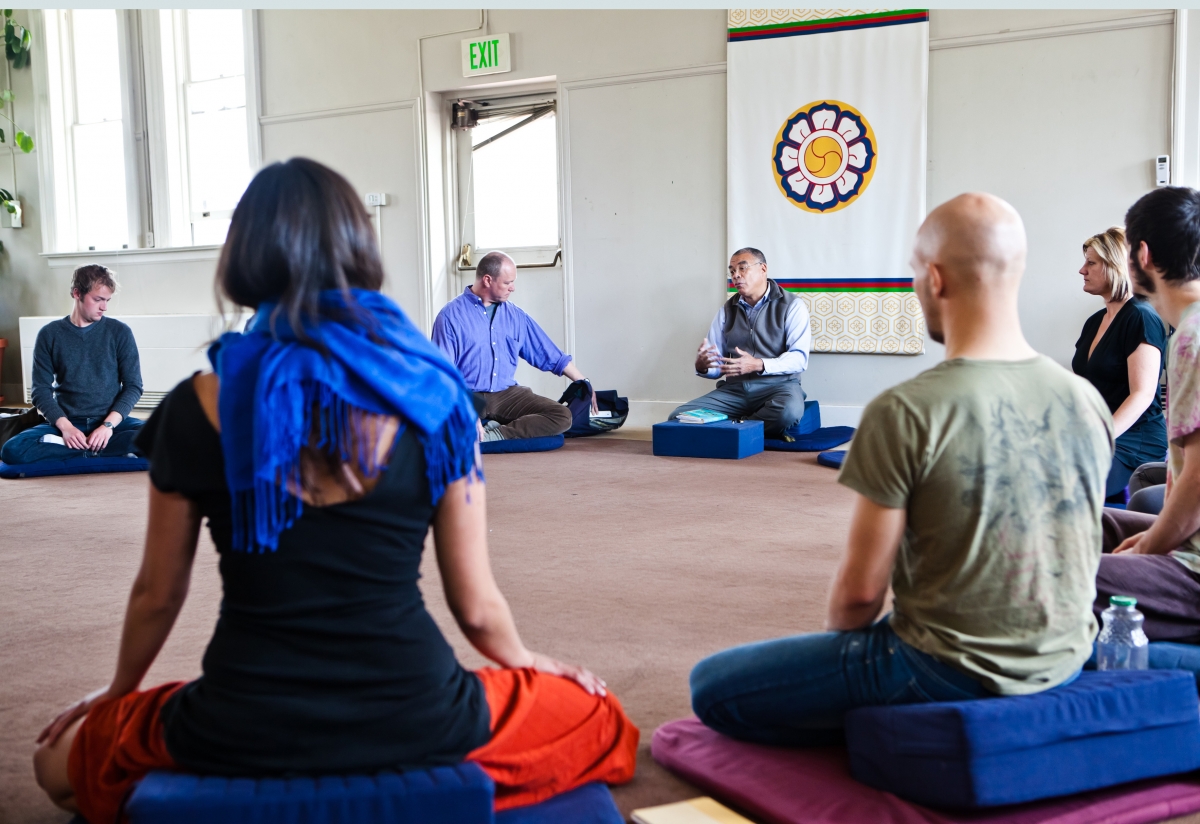
This is the 2nd post of ‘The Soft Spot’ – a new section on the Naropa University blog dedicated to compassion.
A review on kindness by Gaylon Ferguson, PhD, Associate Professor, Religious Studies
A note to the reader: A version of this review previously appeared in the Shambhala Sun where it was titled:
“Born to be Kind?”
This review is based on:
ON KINDNESS
By Adam Phillips and Barbara TaylorBORN TO BE GOOD
The Science of a Meaningful Life
By Dacher KeltnerA PARADISE BUILT IN HELL
The Extraordinary Communities That Arise in Disaster
By Rebecca Solnit
I love stories. In fact, I am far from alone in this pleasure: we human beings, as a species, delight in narrative—one of the fundamental ways, cognitive psychologists now tell us, we make sense of our world. I remember as a child eagerly looking forward to evenings when my grandmother would tell and re-tell all my old favorites: the Tortoise and the Hare, Goldilocks and the Three Bears, Little Red Riding Hood and the Wolf. Later, after I could read for myself of the rumpus of wild things, of ancient Greek heroes making the long journey home, and brave women warriors in China, I learned that stories not only delight but also instruct. Our everyday actions are crucially informed by the stories we believe about ourselves and about each other. Stories are one way we seek to answer the most fundamental questions of life: who are we really, and what are we really like?
These three books challenge us to rethink some of the dominant cultural narratives of our time, the stories we inherit and then re-tell ourselves and our children about our basic nature as human beings. As psychoanalyst Adam Phillips and historian Barbara Taylor wonder in On Kindness, why are many people, upon hearing about acts of courage and compassion, “surprised by the blindingly obvious? Why do the pleasures of kindness astonish us? And why are stories about kindness often so corny or silly, trivializing of the things that matter most to most people?” Their book persuasively explains why and how we have come to think and speak this way about that fundamental human virtue: kindness.
Turns out it was not always this way: the Roman philosopher-emperor Marcus Aurelius called kindness humanity’s “greatest delight.” We inherit from the ancient Greeks words for the love of humanity (philanthropia, agape) and from early Christians a key term for universal loving-kindness (caritas). In a lively and learned early chapter, Phillips and Taylor retrace the fateful steps whereby ideas of altruism and benevolence in the classical age have come to seem, in modern times, merely sentimental, vaguely “soft-minded,” and unrealistic. As one busy, urban physician worried out loud during a group meditation retreat I attended last summer: “Won’t I be taken advantage of if I think too much of the well-being of others? If I don’t seem tough as nails in my field, people will walk all over me!” Taylor and Phillips chart the effects of our ingrained cultural training: “Most people, as they grow up now, secretly believe that kindness is a virtue of losers.”
Here is the question all three books at hand address: are we kind primarily out of fear and weakness and coercion—or is there a natural inclination toward sympathy, literally a “feeling with” others? The images of human life projected in far too many talk shows, televised and cinematic dramas showcase an inherent selfishness. The implicit cultural worldview is skillfully embedded: it’s a mean-spirited world out there in which everyone is primarily and often exclusively looking out for “number one.” Taylor and Phillips question this chorus of modern voices raised against kindness: “An image of the self has been created that is utterly lacking in natural generosity. Most people appear to believe that deep down they (and other people) are mad, bad, and dangerous to know; that as a species—apparently unlike other species of animal—we are deeply and fundamentally antagonistic to each other, that our motives are utterly self-seeking, and that our sympathies are forms of self-protection.”
In interviews, these two writers have described how they came to collaborate on this potent little book. They have also clarified what they are not saying. As Barbara Taylor explains: “Since antiquity, people have argued about whether or not human beings are kind or egotistical. But what seemed striking to us was that in modern times, there’s a sense that one side of that argument has swept the board, and one might call it the Hobbesian point of view. We’re not saying that people have stopped being kind but that kindness has been under a great deal of pressure. What is striking is that people have stopped thinking of human beings as kind. There’s a real suspicion about the human character which has never been, in Western society, as widespread as it is now.” This is the story of how doubt about human goodness came to be so pervasive.
The influential writings of English philosopher Thomas Hobbes played a key role in this decisive cultural shift. Phillips and Taylor show Hobbes, in his most famous work, Leviathan (1651), dismissing “Christian kindness as a psychological absurdity. Men, Hobbes insisted, were selfish beasts who cared for nothing but their own well being, human existence was a ‘warre of alle against alle’…. With Hobbes, selfishness and aggression were transformed from moral vices into psychological facts.” To this day, we sometimes say of acts of uncaring greed: “What can you expect? It’s just human nature to take as much as you can, isn’t it?” Phillips and Taylor invite and encourage our suspicion of this now habitual suspicion of basic humanity. What if, they suggest, to the contrary, “the kind life–the life lived in instinctive sympathetic identification with the vulnerabilities and attractions of others–is the life we are more inclined to live, and indeed is the one we are often living without letting ourselves know that this is what we are doing”?

Our attitudes toward children and childhood are an essential part of this story. Are human beings born as ruthlessly competitive little beasts (essentially small versions of the warring adults and aggressive societies around them), bent from birth on “one-upping” everyone in sight? Or, is there an inborn empathy, a fundamental human-heartedness only later covered over by fearful and defensive cultural conditioning? Aligning themselves with that psychologically astute eighteenth-century French thinker Rousseau, Phillips and Taylor are unequivocal: “[I]t is one of the contentions of this book that children begin their lives ‘naturally’ kind, and that something happens to this kindness as they grow up in contemporary society. This is not a new idea: over 250 years ago Jean-Jacques Rousseau made a passionate plea for the rescue of children’s natural kindness from the corrupting effects of a divided society. This is a key point in the history of kindness, which is also the history of childhood. What is new perhaps is how easily people today are persuaded not to take kindness too seriously. How has something so integral and essential to ourselves become so incidental, so implausible to us?”
Few institutions in contemporary society carry the cultural authority of empirical science. As in many present-day court cases, we grant science the power to adjudicate, to tell us which stories are really true. After all, it’s one thing to believe or feel that we human beings are basically this or that, but–we sometimes wonder: what’s the evidence? What happens when scientific findings weigh in on these old debates about our basic humanity? Born to Be Good: The Science of a Meaningful Life cheerfully engages this “old question: What are the deep origins of our capacity for kindness?” This work grows out of Berkeley professor Dacher Keltner’s postgraduate training with pioneering psychologist of the emotions, Paul Ekman (co-author, with the Dalai Lama, of Emotional Awareness). As Keltner writes: recent “[a]dvances in DNA measurement, in archaeology, and in the study of our primate relatives are yielding striking new insights into the history of humanity…. Embedded in these discoveries is an answer to where our capacity for goodness comes from. Born to Be Good reveals how survival of the kindest may be just as fitting a description of our origins as survival of the fittest.” (Phillips and Taylor would encourage us to wonder: why is it that so many will be surprised at the emergence of these new scientific findings suggesting that we are “hard-wired” for compassion and kindness?) “This ever-changing evolutionary science provides a context for understanding the origins of the positive emotions, where the smile comes from, why we are wired to trust and to care.”
This book is admirably interdisciplinary, drawing generously from evolutionary science, art, literature, and philosophy. One key to this blended narrative of our basic beginnings and deepest motivations—Keltner calls it “jen science”—comes from the ancient Chinese philosopher of a good society, Confucius. “Jen is the central idea in the teachings of Confucius, and refers to a complex mixture of kindness, humanity and respect that transpires between people…. Jen is felt in that deeply satisfying moment when you bring out the goodness in others.” Keltner connects jen (which sounds a lot like the Buddhist “awakened heart” of basic goodness) with Darwin’s careful analyses of the positive emotions of love, joy, sympathy. “Contrary to what many may assume, Darwin believed that these emotions were the basis of our moral instinct and capacity to be good.” It’s because of these “Darwinian views of the origins of human goodness” that Keltner confidently concludes: “Darwin and Confucius would have been very content collaborators.”
Another important collaborator in this cultural conversation is William James, whose late nineteenth-century thesis about the primary role of the body in our emotional life echoes the experiences of many practitioners of yoga through the centuries. “[F]or James, the topography of emotion maps onto our viscera. Every subjective state, from political rage to spiritual rapture to contentment one feels at the sounds of children playing, is registered in its own distinct ‘bodily reverberation.’” Ekman and his colleagues tested and confirmed James’s hypothesis in radically different cultures, diverse branches of the human family. Here, the most relevant aspect of our human physiology is the autonomic nervous system, or ANS. As Keltner continues the story: “James’s unusual thesis inspired other studies of the ANS—of the blush that sears the face, of tears, of goosebumps that ripple down the spine, of the swelling feeling in the chest. These studies reveal that our emotions, even those higher sentiments like sympathy and awe, are embodied in our viscera. As this line of inquiry shifted to the ethical emotions, emotions like embarrassment and compassion, a more radical inference waited on the horizon—that our very capacity for goodness is wired into our body.”
Like Confucius, Keltner wants to link this innate potential—the strong possibility of uncovering, celebrating, and cultivating an embodied human-heartedness—with a vision of a more enlightened society. Each of the final eight chapters of his book explores the science of different positive emotions (love, laughter, compassion, awe) that form the basis of high “jen ratios.” Keltner invents this concept—“a simple but powerful way of looking at the relative balance of good and uplifting versus bad and cynical in life”—and then looks at various nations through this lens: “High jen ratios are proving to be a hallmark of healthy societies.” This view echoes the Gross National Happiness (GNH) index proposed in 1972 by Bhutan’s former King Jigme Singye Wangchuk to promote a vision of a society based on balancing spiritual and material development—instead of simply aiming at a higher yet less humanly satisfying GDP (Gross Domestic Product). According to the Royal Government of Bhutan, “Gross national happiness comprises four pillars: economic self-reliance, environmental preservation, cultural promotion, and good governance.” Keltner’s more modest aim for his book is nonetheless offered in a kindred spirit: “It is a way to think about the clues to happy marriages, well-adapted children, healthy communities and cultures.”
Rebecca Solnit’s A Paradise Built in Hell, on the other hand, recounts historical and first-hand stories of human behavior in the wake of a century of disasters: the 1906 San Francisco earthquake, the 1917 explosion in Halifax, Nova Scotia, the 1985 earthquake in Mexico City, 9/11 in New York, Hurricane Katrina in New Orleans. Throughout, Solnit is keenly attuned to the powerful effects our beliefs about each other’s fundamental nature have on our actions: “Katrina was an extreme version of what goes on in many disasters, wherein how you behave depends on whether you think your neighbors or fellow citizens are a greater threat than the havoc wrought by a disaster or a greater good than the property in houses and stores around you.” In each case, she meticulously documents the spontaneous arising of communities of solidarity marked by altruism and life-saving acts of compassionate bravery. “In the wake of an earthquake, a bombing, or a major storm, most people are altruistic, urgently engaged in caring for themselves and those around them, strangers and neighbors as well as friends and loved ones. The image of the selfish, panicky, or regressively savage human being in times of disaster has little truth in it…. [O]ften the worst behavior in the wake of a calamity is on the part of those who believe that others will behave savagely and that they themselves are taking defensive measures against barbarism. From earthquake-shattered San Francisco in 1906 to flooded New Orleans in 2005, innocents have been killed by people who believed or asserted that their victims were the criminals and that they themselves were the protectors of the shaken order. Beliefs matter.”
Solnit’s outrageous thesis is that in the midst of tragic disasters often we are offered a glimpse of a wider human possibility—an actual community in paradise. There is a long tradition of social visions of “utopia”—the word literally means “a good place”—but hers is startling for grounding itself in a good news arising out of chaos, the suspension of the ordinary social order. “[D]isaster doesn’t sort us out by preferences; it drags us into emergencies that require we act, and act altruistically, bravely, and with initiative in order to survive or save the neighbors, no matter how we vote or what we do for a living. The positive emotions that arise in those unpromising circumstances demonstrate that social ties and meaningful work are deeply desired, readily improvised, and intensely rewarding…. We need ties, but they along with purposefulness, immediacy, and agency also give us joy—the startling, sharp joy I found in accounts of disaster survivors. These accounts demonstrate that the citizens any paradise would need—the people who are brave enough, resourceful enough, and generous enough—already exist. The possibility of paradise hovers on the cusp of coming into being, so much so that it takes powerful forces to keep such a paradise at bay. If paradise now arises in hell, it’s because in the suspension of the usual order and the failure of most systems, we are free to live and act another way…. This social desire and social possibility go against the grain of the dominant stories of recent decades.”
So, stories matter. They tell us who we are, what we are capable of, that our present human social arrangements might be otherwise. Stories remind us that the current state of things is never an unchangeable fate. When we are nourished primarily on the equivalent of fast-food narratives of human possibility (“it’s every man for himself in a dog-eat-dog world”), our vision and abilities to manifest a greater good are weakened, falling into chronic despair from the failure to actively engage our human potential. As Thoreau says, all too often we live lives of “quiet desperation.” These three books sound an awakening music, reminding us how vitally important naturally brave compassion is in our fearful era. As Solnit articulates her vision of an emergent possible future: “Few speak of paradise now, except as something remote enough to be impossible. The ideal societies we hear of are mostly far away or long ago or both, situated in some primordial society before the Fall or a spiritual kingdom in a remote Himalayan vastness. The implication is that we here and now are far from capable of living such ideals. But what if paradise flashed up among us from time to time—at the worst of times? What if we glimpsed it in the jaws of hell? These flashes give us, as the long ago and far away do not, a glimpse of who else we ourselves may be and what else our society could become.”





